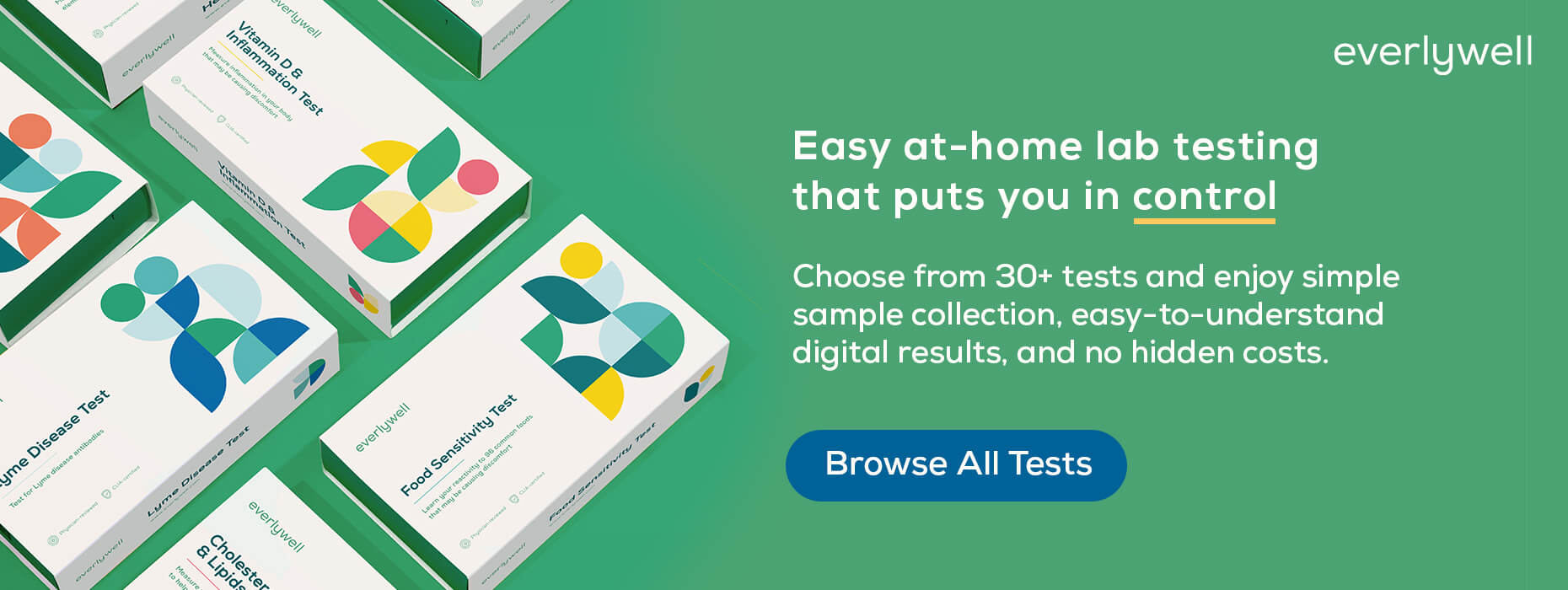
How to improve egg quality and quantity
Medically reviewed on February 15, 2022 by Jordan Stachel, M.S., RDN, CPT. To give you technically accurate, evidence-based information, content published on the Everlywell blog is reviewed by credentialed professionals with expertise in medical and bioscience fields.
It’s an understatement to say that the human reproductive system is complex. While family planning can sound like a straightforward process, there are an endless number of factors involved that can affect fertility and health.
Egg count is just one factor. While women are born with up to 1 to 2 million potential egg cells in the form of ovarian follicles, that number drastically goes down with age. By puberty, about 300,000 potential eggs remain, and only about 300 to 400 eggs will ovulate during your reproductive lifetime [1]. However, personal health and various environmental factors can affect the quantity and quality of eggs. Learn more about how to improve egg quality and quantity — and how to test for potential indicators of diminished ovarian reserve with an FSH test — below.
Understanding Egg Count and Quality
Both the number of eggs and the quality of those eggs contribute to the ability to conceive. The term “egg” here is a simplification. The hundreds of thousands of “eggs” in the system refer to the number of oocytes or immature egg cells [2]. Each oocyte rests and develops within a follicle. These are found all over the outer layer of the ovaries.
Every day, about 30 to 35 of these follicles begin an 85-day journey to develop into mature eggs. As they mature, they become sensitive to the hormones released during the monthly menstrual cycle. However, only one dominant follicle ovulates, becoming a mature and viable egg that can be fertilized.
No new egg cells are made in a lifetime, so the number of egg-containing follicles gradually depletes as you get older. With 30 to 35 immature egg cells lost per day, about 1,000 egg cells are lost per month. By age 40, individuals will be down to about 3 percent of their initial egg supply. Having fewer egg cells naturally means a lower chance of proper fertilization, which is often why having children gets harder after the age of 37. However, it’s not uncommon for some to have children well into their mid-to-late 40s.
Once you run out of eggs, the ovaries will gradually stop making estrogen, signaling menopause. This also marks the end of menstrual cycles.
The quality of the eggs, or egg health, also plays an important role in fertility. Older egg cells tend to be more prone to errors during the process of maturation and division, which increases the risk of chromosomal abnormalities in embryos. This is known as aneuploidy [3]. Although aneuploidy can potentially contribute to birth defects and developmental issues, it more often results in miscarriage, usually in early stages. This can occur before someone even knows that they are pregnant.
For those who choose in vitro fertilization, poor egg quality can also cause difficulties with implanting embryos, preventing eggs from getting fertilized at all.
Understanding Diminished Ovarian Reserve
The ovarian reserve is a technical way of referring to your egg count [4]. Your ovarian reserve is constantly going down, but for some, the process is more sped up. Diminished ovarian reserve is a condition wherein one or both ovaries lose their normal reproductive potential, which causes a decrease in the quality and quantity of egg cells.
This is one of the most common causes of infertility, particularly in those over the age of 35. Diminished ovarian reserve is a factor in about 10 to 30 percent of patients looking to be treated for infertility. While illness, injury, and genetic abnormalities can accelerate the decline of eggs, diminished ovarian reserve is generally caused by aging.
There are currently no treatments to prevent diminished ovarian reserve, but it is becoming easier to identify. There are also more options once diminished ovarian reserve is identified. These can include treatments for reducing the time to conception, or freezing eggs or embryos. Patients interested in IVF may also be placed under higher doses of ovarian stimulation medications, which maximize the number of viable eggs that can be harvested.
Improving the Quality and Quantity of Eggs
As mentioned previously, there are currently no clinical or medical means of increasing the number of eggs or improving their quality once the natural decline has started, but there are some small lifestyle changes that can be made that can potentially help.
Quit Smoking
Along with its laundry list of detrimental health effects, smoking can be extremely harmful to the ovaries and egg cells. The chemicals in cigarettes can permanently speed up egg loss and potentially mutate eggs to make them unsuitable for fertilization.
Relieve Stress
Managing stress can be easier said than done, but try to find constructive ways to reduce everyday stress. Chronic stress leads to a steady flow of cortisol and other chemicals that can cause a whole host of physiological and emotional effects, including halting or interfering with regular ovulation. It’s impossible to avoid all forms of stress, but things like yoga, breathing exercises, and time with loved ones can all go a long way to keeping stress under control.
Maintain Regular Exercise
Exercise can help with just about every part of optimizing general health. It can improve overall blood flow, allowing more oxygen and nutrients to reach the ovaries. Exercise also helps to reduce stress.
Eat a Balanced Diet
There aren’t any specific foods that will magically increase egg count, but what you put into your body will inherently affect it. Try to include a balanced diet, including plenty of fiber-rich fruits and green, leafy vegetables, along with lean meats and whole grains [5]. Avoid trans fats, over-processed foods, and/or excessive amounts of foods containing added sugars.
Get an Egg Checkup
Too often, people will get their eggs checked when they are already having trouble conceiving. Visiting a local fertility clinic early and regularly can help monitor egg quantity and quality and get a better idea of fertility and reproductive health. This helps to make more informed decisions and develop a timeline on your own terms.
A fertility clinic offers a variety of tools and tests to help with the process, including:
Antral follicle count – This test involves a simple ultrasound device. Antral follicles are small ovarian follicles that can be viewed and counted with an ultrasound. A healthcare provider can count the visible follicles and make a fairly accurate estimate for the number of primordial follicles (and immature eggs) still in the ovaries.
Anti-Mullerian hormone test – Anti-Mullerian hormone (AMH) is a chemical produced by follicles early in their growth. While testing for this hormone won’t give any indications about quality, AMH tests can provide information regarding the pool of growing follicles in the ovaries, which can point to more viable eggs.
Follicle-stimulating hormone test – Produced in the pituitary gland, follicle-stimulating hormone (FSH) is the chemical that initiates follicles to mature and release an egg during ovulation. Higher FSH levels essentially indicate that the body is working harder to ovulate. With no ovulation at all, the pituitary gland may constantly pump out FSH. This can suggest a diminished ovarian reserve.
Maintaining or improving egg count and quality can be difficult and personal. If you are concerned about fertility or reproductive health, consider the Everlywell Women’s Fertility Testing kit. This uses a day 3 FSH levels to determine the health of the ovarian reserve and determine if there are adequate eggs for ovulation.
Also consider browsing the suite of fertility products offered by Natalist, including a Women's Fertility Test bundle and prenatal daily packets.
References
1. Female Reproductive System. Cleveland Clinic. URL. Accessed February 15, 2022.
2. Eggs. Molecular Biology of the Cell 4th edition. URL. Accessed February 15, 2022.
3. Genetic Disorders. American College of Obstetricians and Gynecologists. URL. Accessed February 15, 2022.
4. Diminished Ovarian Reserve. ColumbiaDoctors. URL. Accessed February 15, 2022.
5. Fertility and diet: Is there a connection? Harvard Health. URL. Accessed February 15, 2022.
